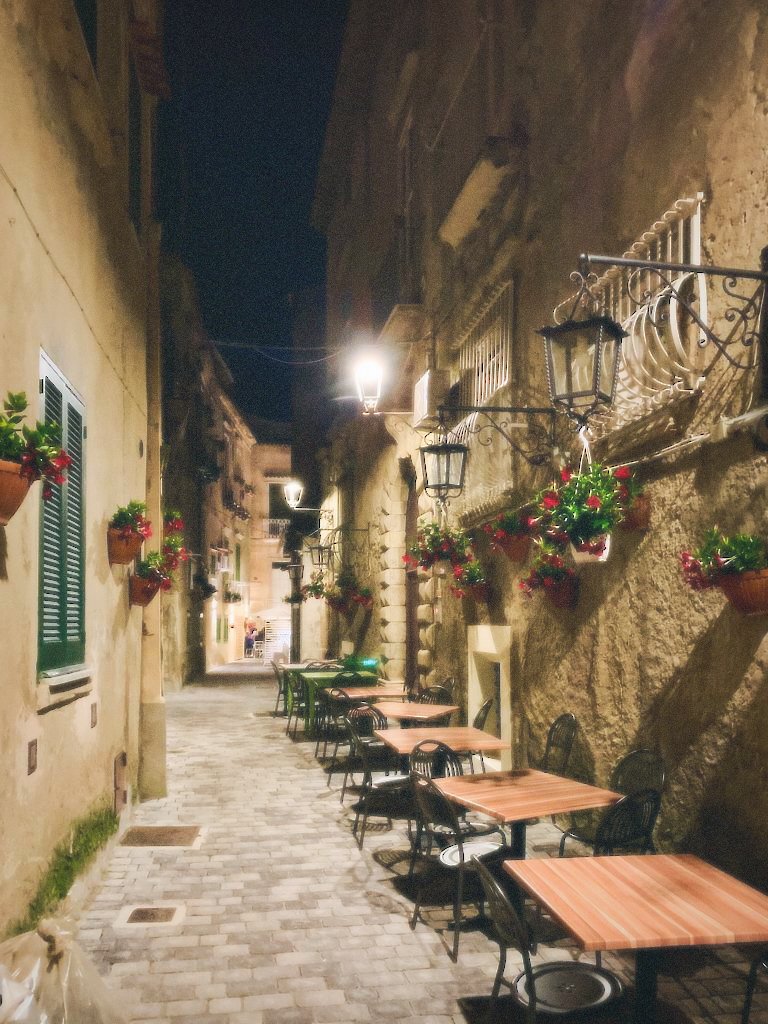The 6 senses of Calabria. Calabria to touch
CALABRIA TO TOUCH
Ceramics
Calabria is famous for its colourful ceramic traditions, particularly in towns like Squillace and Gerace. The region's pottery often features bright colours and intricate designs, with themes inspired by nature, folklore, and religious symbols.
Woven Fabrics (Brocade and Wool)
In rural areas of Calabria, traditional weaving techniques have been passed down through generations. Locally produced wool is often spun into beautiful blankets, scarves, and shawls. In particular, Reggio Calabria is known for its high-quality textiles, which are made with intricate weaving methods.
Goldsmithing (Filigree Jewelry)
The art of goldsmithing has deep roots in Calabria, with delicate filigree jewelry being one of the region’s specialties. Locri and Gerace are known for their high-quality handmade jewelry, which often features intricate designs and motifs drawn from nature and history.
Lace (Pizzo Calabrese)
The town of Pizzo is renowned for its lacework, a centuries-old tradition that has been passed down through generations. Skilled artisans create fine lace items, including tablecloths, handkerchiefs, and intricate garments.
Wood Carving
Calabrian artisans are skilled in wood carving, especially in the creation of religious items, such as crucifixes, statues, and icons. These are often seen in the mountainous regions of the area. Handcrafted furniture and home decor pieces are also part of this tradition, often using local woods such as olive and chestnut.
Weaving and Textiles
Calabria is home to traditional weaving techniques, particularly in the areas of Cotronei and Stilo. Locally made textiles, including hand-woven tapestries, blankets, and scarves, are prized for their quality and design. The use of natural fibers like wool and linen is common, and the craftsmanship showcases vibrant, geometric patterns.
Coral Jewelry (Corallo di Scilla)
The coastal town of Scilla is famous for its coral jewelry. The Mediterranean has been a source of coral for centuries, and in Calabria, artisans use it to create beautiful necklaces, rings, earrings, and other adornments. The craftsmanship of these pieces is highly regarded, with many featuring traditional designs passed down through generations.
Leatherwork
Calabria also boasts a tradition of leather crafting, producing quality items such as belts, bags, wallets, and shoes. Many of these items feature intricate stitching and high-quality leather sourced from the region.
Handmade Knives (Coltelli di Calabria)
Calabrian knives are known for their traditional designs and craftsmanship. These knives are often made with high-quality steel and feature wooden or horn handles, sometimes with intricate carvings. They are not only functional but also works of art.
Basketry (Cestini)
Basket-making is another important craft in Calabria, particularly in rural areas. Using willow or other locally sourced materials, artisans create practical baskets as well as decorative items, often with intricate patterns.
Handmade Soap (Sapone di Calabria)
The production of handmade soap is a longstanding tradition in Calabria. Often made with olive oil, these soaps are known for their gentle properties and natural ingredients. They are often infused with local scents, such as citrus and herbs.
Liuto (lute)
It has historical connections to the ancient Mediterranean world, and its presence in Calabria is a reflection of the region’s strategic position and cultural exchanges with other Mediterranean cultures, especially through the Arab, Greek, and Norman influences over the centuries.
In Calabria, the liuto holds a special place in the region's musical traditions, especially in areas where folk music is prominent. The lute, a stringed instrument with roots in ancient Mediterranean cultures, has been part of the Calabrian music scene for centuries, reflecting the history, labour, and daily life of the people. It often accompanies vocal performances in rural festivities, celebrations, and gatherings.
If you are ever in Calabria, visiting local museums or cultural centers may give you a deeper insight into how the liuto is crafted and its significance in the region’s music. You might even come across a live performance or artisan demonstrating how the instrument is made and played!
Calabrian lutes can be similar to the traditional Italian Renaissance lute but often have unique regional characteristics. They are typically plucked string instruments, and their design features include:
A long neck with a flat or slightly curved fingerboard.
Multiple courses of strings (typically 6-7 courses, with each course having 1-2 strings).
A bowl-shaped back made of thin wooden strips that are bent and glued together, creating a resonant, curved structure.
A large, round sound hole at the center of the soundboard, often ornately decorated.
The tuning and construction of the Calabrian lute can vary slightly based on its intended use, whether for solo performance or accompaniment in ensemble settings.

